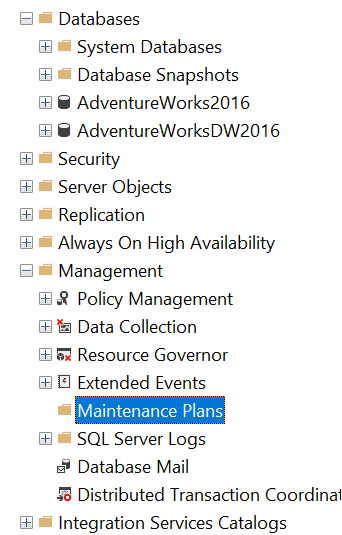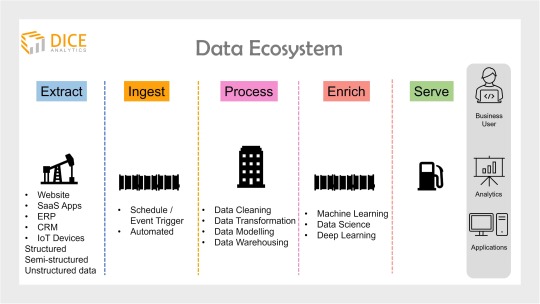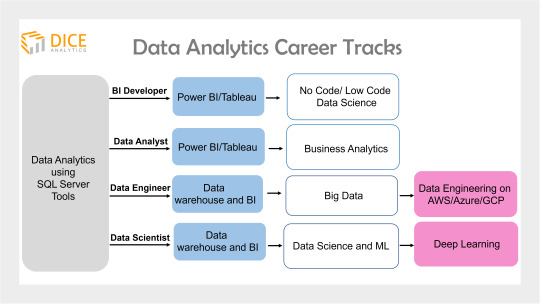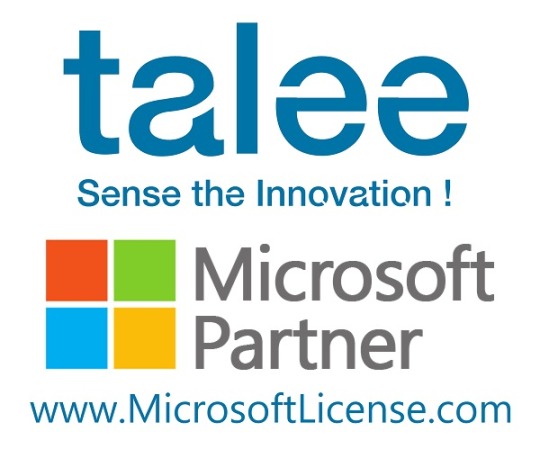#SQL Server Management Studio (SSMS)
Explore tagged Tumblr posts
Text
Install SQL Server Management Studio 21 on Windows Server
In this article, we shall discuss how to Install SQL Server Management Studio 21 on Windows Server. SSMS 21 can be installed via the “Visual Studio Installer.” Microsoft’s shift to using the Visual Studio-style installer for tools like SSMS 21 as highlighted during Microsoft Build. This reflects a broader strategy on unified experience, and also for Cloud and Azure Integration. How to install SQL…
0 notes
Text
Rebuild index using SQL Server Maintenance wizard in Management folder
1. Open SQL Server Management Studio (SSMS) and connect to your SQL Server instance. 2. Navigate to the Management folder: In the Object Explorer, expand the server node. Expand the Management folder. 3. Launch the Maintenance Plan Wizard: Right-click on the Maintenance Plans node. Select Maintenance Plan Wizard. 4. Create a New Maintenance Plan: Follow the prompts to create a new…

View On WordPress
0 notes
Text
Các công cụ cần có để quản trị VPS Windows hiệu quả
VPS Windows là một trong những lựa chọn phổ biến cho doanh nghiệp và cá nhân cần một môi trường máy chủ mạnh mẽ, dễ quản lý. Tuy nhiên, để vận hành VPS Windows hiệu quả, bạn cần trang bị các công cụ hỗ trợ giúp giám sát, tối ưu hiệu suất và bảo mật hệ thống. Trong bài viết này, chúng ta sẽ cùng khám phá những công cụ cần thiết để quản trị VPS Windows hiệu quả nhất.
Công cụ giám sát hiệu suất VPS Windows
Task Manager: Task Manager là công cụ mặc định của Windows giúp theo dõi tài nguyên hệ thống như CPU, RAM, ổ đĩa và mạng. Đây là công cụ cơ bản nhưng rất quan trọng để quản lý hiệu suất VPS.
Resource Monitor: Resource Monitor cung cấp cái nhìn chi tiết hơn về các tài nguyên hệ thống đang được sử dụng, giúp bạn phân tích các tiến trình đang chạy, mức độ sử dụng bộ nhớ và dung lượng ổ cứng.
Performance Monitor: Performance Monitor cho phép bạn tạo biểu đồ và báo cáo chi tiết về hiệu suất hệ thống theo thời gian thực, giúp theo dõi các thông số quan trọng như tốc độ CPU, mức sử dụng RAM và hiệu suất đĩa cứng.
Công cụ quản lý từ xa
Remote Desktop Connection (RDP): Remote Desktop Connection là công cụ mặc định của Windows, giúp bạn kết nối và quản lý VPS Windows từ xa một cách dễ dàng.
AnyDesk: AnyDesk là một phần mềm điều khiển từ xa nhẹ, tốc độ nhanh và bảo mật cao, giúp bạn truy cập VPS Windows từ bất kỳ đâu.
TeamViewer: TeamViewer là một công cụ phổ biến khác để kết nối và quản lý VPS từ xa, phù hợp cho những ai cần hỗ trợ kỹ thuật hoặc quản trị nhiều máy chủ cùng lúc.
Công cụ bảo mật và quản lý tường lửa
Windows Defender Firewall: Windows Defender Firewall là giải pháp tường lửa tích hợp trong Windows, giúp ngăn chặn các cuộc tấn công và bảo vệ hệ thống khỏi phần mềm độc hại.
Bitdefender GravityZone: Bitdefender cung cấp giải pháp bảo mật mạnh mẽ giúp bảo vệ VPS khỏi virus, malware và các mối đe dọa trực tuyến.
Snort: Snort là một hệ thống phát hiện xâm nhập (IDS) mạnh mẽ, giúp phát hiện và ngăn chặn các cuộc tấn công mạng vào VPS Windows.
Công cụ sao lưu và phục hồi dữ liệu
Windows Server Backup: Windows Server Backup là công cụ sao lưu miễn phí tích hợp sẵn trên Windows Server, giúp bạn sao lưu và khôi phục dữ liệu nhanh chóng.
Veeam Backup & Replication: Veeam là một trong những phần mềm sao lưu hàng đầu, hỗ trợ sao lưu định kỳ và khôi phục dữ liệu dễ dàng trên VPS Windows.
Acronis Cyber Protect: Acronis cung cấp giải pháp sao lưu dữ liệu toàn diện, giúp bảo vệ VPS khỏi các sự cố hệ thống hoặc mất dữ liệu do tấn công mạng.
Công cụ quản lý cơ sở dữ liệu
Microsoft SQL Server Management Studio (SSMS): SSMS là công cụ mạnh mẽ giúp quản lý cơ sở dữ liệu SQL Server trên VPS Windows, cung cấp giao diện trực quan và nhiều tính năng hữu ích.
MySQL Workbench: Nếu bạn sử dụng MySQL trên VPS Windows, MySQL Workbench là công cụ không thể thiếu để quản lý, thiết kế và tối ưu hóa cơ sở dữ liệu.
phpMyAdmin: phpMyAdmin là công cụ web-based giúp quản lý cơ sở dữ liệu MySQL trên VPS Windows dễ dàng thông qua trình duyệt.
Công cụ tối ưu hóa và dọn dẹp VPS Windows
CCleaner: CCleaner giúp dọn dẹp file rác, registry lỗi và tối ưu hóa hệ thống để VPS Windows hoạt động nhanh hơn.
Process Explorer: Process Explorer là công cụ thay thế Task Manager, cung cấp thông tin chi tiết về các tiến trình đang chạy trên VPS.
WinDirStat: WinDirStat giúp phân tích dung lượng ổ cứng, tìm kiếm và xóa các file chiếm nhiều không gian trên VPS.
Công cụ quản lý web server
IIS Manager: IIS Manager là công cụ quản lý dịch vụ web server trên Windows, giúp thiết lập và cấu hình website chạy trên VPS.
XAMPP: XAMPP cung cấp môi trường máy chủ web gồm Apache, MySQL, PHP, rất hữu ích cho việc phát triển và kiểm tra ứng dụng web trên VPS Windows.
Docker for Windows: Docker giúp triển khai và quản lý các ứng dụng container trên VPS Windows, hỗ trợ xây dựng môi trường phát triển linh hoạt.
Kết luận
Việc quản trị VPS Windows hiệu quả không chỉ phụ thuộc vào kỹ năng của quản trị viên mà còn cần đến sự hỗ trợ của các công cụ phù hợp. Từ giám sát hiệu suất, bảo mật, sao lưu dữ liệu đến tối ưu hóa hệ thống, mỗi công cụ đều đóng vai trò quan trọng trong việc đảm bảo VPS hoạt động ổn định và an toàn. Hãy lựa chọn và kết hợp các công cụ trên để quản trị VPS Windows một cách chuyên nghiệp và hiệu quả nhất.
Tham khảo thêm: https://vndata.vn/vps-windows-gia-re/
0 notes
Text
SQL Query Tuning 101: Optimize Performance Fast
Introduction SQL query tuning is the process of optimizing SQL queries to improve their performance and efficiency. This is crucial for maintaining fast and responsive applications, especially as datasets grow. In this guide, you’ll learn how to identify and fix performance bottlenecks in your SQL queries using tools like SQL Server Management Studio (SSMS), the EXPLAIN statement, and query…
0 notes
Text
Understanding SQL Server Management Studio (SSMS)
SQL Server Management Studio (SSMS): A Complete Guide for Beginners & Experts Hello, fellow SQL enthusiasts! In this blog post, I will introduce you to SQL Server Management Studio (SSMS) Guide, a powerful tool for managing SQL databases. SSMS provides an intuitive interface to create, manage, and optimize databases efficiently. Whether you’re a beginner or an experienced developer, mastering…
0 notes
Text
Essential Tools for .NET Developers

.NET development requires a robust set of tools to enhance productivity, streamline development, and ensure high-quality applications.
Whether you’re building web applications, desktop software, or cloud-based solutions, having the right tools can make a significant difference. Here’s a list of essential tools for .NET developers:
1. IDEs and Code Editors
Visual Studio — The most powerful and widely used IDE for .NET development, offering features like IntelliSense, debugging, and seamless integration with Azure.
Visual Studio Code (VS Code) — A lightweight, cross-platform editor with great extensions for C#, .NET, and debugging.
2. Package Management
NuGet — The default package manager for .NET, allowing developers to install and manage libraries with ease.
3. Build and CI/CD Tools
MSBuild — Microsoft’s build system for compiling, packaging, and deploying .NET applications.
Azure DevOps — Provides CI/CD pipelines, version control, and project management tools.
GitHub Actions — Automates builds, tests, and deployments within GitHub.
Jenkins — A widely used automation tool for building, testing, and deploying applications.
4. Version Control
Git — The most widely used version control system.
GitHub / GitLab / Bitbucket — Popular platforms for hosting Git repositories.
5. Debugging and Profiling
Visual Studio Debugger — A built-in debugger with advanced features for breakpoints, watch variables, and call stacks.
dotTrace — A powerful profiling tool for performance analysis.
PerfView — A Microsoft tool for analyzing CPU usage, memory, and performance bottlenecks.
6. Testing Frameworks
xUnit.net — A modern unit testing framework for .NET.
NUnit — A widely used unit testing framework with rich assertions.
MSTest — Microsoft’s built-in testing framework for .NET applications.
SpecFlow — A BDD (Behavior-Driven Development) framework for .NET.
7. Dependency Injection & Inversion of Control (IoC)
Autofac — A flexible IoC container for .NET applications.
Microsoft.Extensions.DependencyInjection — The built-in DI container for .NET Core and .NET 5+.
8. ORM and Database Management
Entity Framework Core — A modern ORM for .NET applications.
Dapper — A lightweight, high-performance ORM for .NET.
SQL Server Management Studio (SSMS) — A must-have tool for managing SQL Server databases.
9. API Development and Testing
Postman — A popular tool for testing and documenting APIs.
Swagger (Swashbuckle) — Generates interactive API documentation for ASP.NET Core applications.
10. Logging and Monitoring
Serilog — A structured logging library for .NET applications.
NLog — A flexible logging framework.
Application Insights — Microsoft’s monitoring tool integrated with Azure.
11. Cloud & DevOps Tools
Azure SDK for .NET — A set of libraries for interacting with Azure services.
AWS SDK for .NET — For working with AWS services in .NET applications.
Docker — Essential for containerizing .NET applications.
Kubernetes — For orchestrating containerized applications in cloud environments.
12. Productivity and Collaboration
ReSharper — A powerful extension for Visual Studio that enhances code analysis and refactoring.
Notepad++ / WinMerge — Handy tools for quick code edits and file comparisons.
WEBSITE: https://www.ficusoft.in/dot-net-training-in-chennai/
0 notes
Text
Copilot機能が導入された『SQL Server Management Studio 21(SSMS 21)』リリース:Visual Studio 2015シェルから64ビット対応Visual Studio 2022ベースへ移行、モダンな開発環境を実現
SQL Server管理基盤の64ビット化がもたらす革新 SQL Server Management Studio(SSMS)は、データベース管理者や開発者にとって必須のツールとして長年活用されてきました。 今回のSSMS 21における64ビットアーキテクチャーへの移行は、単なるバージョンアップを超えた画期的な進化を実現しています。 メモリ管理の大幅な改善 64ビットアーキテクチャーの採用により、4GB以上のメモリ空間を直接活用できるようになりました。 大規模なデータベース操作や複雑なクエリの実行時でも、メモリ不足による制限から解放され、安定した動作が実現します。 パフォーマンスの最適化 Visual Studio…
0 notes
Text
Understanding SQL Server

Introduction
SQL Server is a relational database management system (RDBMS) developed by Microsoft. It is designed to store and manage large volumes of data efficiently while ensuring high performance, scalability, and security. This article delves into the key features, architecture, and benefits of SQL Server, along with best practices for database management.
Key Features of SQL Server
1. Relational Database Management
At its core, SQL Server uses a relational database model, allowing data to be organized in tables that can be easily accessed and managed. Tables are structured into rows and columns, making it straightforward to retrieve and manipulate data using SQL (Structured Query Language).
2. Scalability and Performance
SQL Server is built to handle varying loads, from small applications to large enterprise-level systems. Its architecture supports horizontal and vertical scaling, allowing businesses to expand their database as their data needs grow. Features like partitioning, indexing, and in-memory processing enhance performance, making SQL Server suitable for high-transaction environments.
3. Security Features
Security is paramount in database management, and SQL Server offers robust security mechanisms. Role-based security, encryption (both at rest and in transit), and advanced auditing features help safeguard sensitive data against unauthorized access and breaches.
4. High Availability and Disaster Recovery
SQL Server provides several options for high availability and disaster recovery. Techniques such as Always On Availability Groups, database mirroring, and backup/restore strategies ensure that data remains accessible even in the event of hardware failures or disasters.
5. Integration Services (SSIS)
SQL Server Integration Services (SSIS) is a powerful data integration tool that allows users to extract, transform, and load (ETL) data from various sources. This capability is crucial for data warehousing and business intelligence applications, enabling organizations to consolidate data from different platforms.
6. Reporting Services (SSRS)
SQL Server Reporting Services (SSRS) provides comprehensive tools for generating, managing, and delivering reports. Users can create interactive reports, dashboards, and visualizations, allowing decision-makers to derive insights from data effectively.
7. Analysis Services (SSAS)
SQL Server Analysis Services (SSAS) offers analytical capabilities, allowing users to perform multidimensional analysis and data mining. It supports the creation of OLAP cubes and complex analytical models, which facilitate advanced data analysis and reporting.
SQL Server Architecture
Understanding SQL Server architecture is essential for database administrators and developers. The architecture can be broadly divided into several components:
1. Database Engine
The database engine is the core component of SQL Server, responsible for managing data storage, retrieval, and processing. It includes the query processor, storage engine, and transaction log management.
2. SQL Server Instance
An instance is a separate installation of SQL Server. Multiple instances can run on a single server, allowing for isolation and management of different applications or environments.
3. Databases
Each instance can contain multiple databases. A database is a collection of related data, organized in a structured format. SQL Server supports multiple database types, including user-defined and system databases.
4. Data Files and Log Files
SQL Server uses data files (.mdf and .ndf) to store data and log files (.ldf) to maintain transaction logs. Data files hold the actual data, while log files track all transactions, ensuring data integrity and facilitating recovery.
Benefits of SQL Server
1. Ease of Use
SQL Server's user-friendly interface and comprehensive documentation make it accessible to both novice and experienced database administrators. Tools like SQL Server Management Studio (SSMS) provide intuitive graphical interfaces for managing databases.
2. Strong Community Support
As a widely used database management system, SQL Server has a robust community of users and developers. This community contributes to a wealth of online resources, forums, and third-party tools, providing support for troubleshooting and optimization.
3. Integration with Other Microsoft Products
SQL Server seamlessly integrates with other Microsoft products, such as Excel, Power BI, and Azure. This integration enhances data analysis and visualization capabilities, allowing organizations to leverage their data effectively.
4. Comprehensive Development Tools
SQL Server offers a variety of development tools, including Visual Studio integration, T-SQL for writing queries, and APIs for connecting applications. These tools facilitate efficient database development and management.
Best Practices for SQL Server Management
To ensure optimal performance and security, consider the following best practices:
1. Regular Backups
Implement a robust backup strategy, including full, differential, and transaction log backups. Regular backups help protect against data loss and ensure quick recovery in case of failures.
2. Performance Monitoring
Utilize SQL Server’s built-in monitoring tools to track performance metrics, identify bottlenecks, and optimize queries. Tools like SQL Server Profiler and Performance Monitor can provide insights into query performance and system health.
3. Security Management
Regularly review and update security settings, including user permissions and roles. Implement encryption for sensitive data and use auditing features to monitor access and changes.
4. Indexing Strategy
Develop a sound indexing strategy to enhance query performance. Regularly review and optimize indexes to ensure efficient data retrieval without unnecessary overhead.
5. Documentation and Change Management
Maintain thorough documentation of database structures, configurations, and changes. This practice aids in troubleshooting, compliance, and knowledge sharing among team members.
0 notes
Text
SQL Server 2024: Five Must-Know Enhancements for Modern Database Management

Microsoft’s SQL Server continues to evolve with its latest release, introducing powerful features designed to enhance security, boost performance, and simplify administration — whether you’re running it on-premises or in the cloud with Azure. In this blog post, we’ll explore five standout features of the new SQL Server release and how they can improve your workflows and applications.
1. Integrated Machine Learning with Large Data Sets
Big Data Clusters in SQL Server allow you to manage massive datasets by setting up scalable clusters of HDFS, SQL Server, and Spark containers. With built-in support for machine learning, you can now analyze vast amounts of data and run machine learning models directly within your SQL Server environment. This is perfect for businesses looking to harness the power of AI and predictive analytics without needing separate systems.
Key Benefits:
Seamless Data Integration: Connect Spark, HDFS, and SQL Server effortlessly.
Built-In Machine Learning: Analyze large datasets and run models within SQL Server.
Scalable Architecture: Easily handle and process large volumes of data.
2. Enhanced Security with Always Encrypted
Data security is a top priority for modern businesses, and SQL Server’s Always Encrypted technology takes it to the next level. The latest update introduces Always Encrypted with Secure Enclaves, allowing you to perform calculations on encrypted data without ever decrypting it in memory. This ensures that sensitive data remains protected throughout the entire processing cycle.
Key Benefits:
Advanced Encryption: Enhanced protection for your sensitive data.
Secure Data Processing: Keep data encrypted even during calculations.
Increased Security: Better defense against insider threats and malicious attacks.
3. Intelligent Query Processing for Optimal Performance
The latest SQL Server version introduces Intelligent Query Processing (IQP), which automatically improves the performance of your database queries. This feature eliminates the need for manual query tuning by dynamically optimizing queries based on real-time execution patterns, ensuring that your database adapts to varying workloads with ease.
Key Benefits:
Automatic Performance Boost: Get better query performance without manual tweaks.
Dynamic Optimization: Queries adjust automatically to workload changes.
Efficient Query Handling: Overcome complex query performance bottlenecks.
4. Hybrid Cloud Flexibility with Azure Integration
SQL Server’s seamless integration with Azure allows you to build and manage hybrid cloud solutions with ease. You can now extend your on-premises database to the cloud, benefiting from cloud scalability and disaster recovery without abandoning your existing infrastructure. This hybrid approach provides the flexibility to scale your operations while keeping your data secure and accessible.
Key Benefits:
Scalable Cloud Integration: Easily extend your database to the cloud.
Improved Disaster Recovery: Benefit from Azure’s robust disaster recovery solutions.
Cost Efficiency: Optimize costs by combining on-premises and cloud resources.
5. Improved Developer Experience with Enhanced Tools
The latest SQL Server release includes updates to SQL Server Management Studio (SSMS) and Azure Data Studio, providing developers with powerful tools to manage, monitor, and develop their SQL Server environments more effectively. These tools come with improved debugging, version control, and collaboration features, making it easier for teams to work together and streamline their development processes.
Key Benefits:
Advanced Management Tools: Take advantage of enhanced SSMS and Azure Data Studio.
Better Collaboration: Streamline development with improved team features.
Efficient Debugging: Simplified debugging for faster problem resolution.
How Memetic Solutions Can Help?
At Memetic Solutions, we specialize in helping businesses fully leverage SQL Server’s new features. Whether you need to implement Big Data Clusters, enhance security with Always Encrypted or integrate SQL Server with Azure for a hybrid cloud solution, our team of experts is here to assist.
We offer customized, high-performance, and scalable database setups tailored to your specific business needs. By partnering with Memetic Solutions, you can ensure that your SQL Server infrastructure operates at peak efficiency, utilizing the latest advancements in machine learning, cloud integration, and query optimization.
#SQLServer2024#DatabaseManagement#MachineLearning#DataSecurity#CloudIntegration#QueryOptimization#MemeticSolutions#TechInnovation
0 notes
Text
This post will explore SQL Server Management Studio's complexities, features, benefits, and potential disadvantages. Let’s explore the world of SQL Server Management Studio:
https://madesimplemssql.com/ssms/
Please follow our FB page: https://www.facebook.com/profile.php?id=100091338502392

#technews#microsoft#sqlite#sqlserver#database#sql#tumblr milestone#vpn#powerbi#madesimplemssql#data science
1 note
·
View note
Text
Install SQL Server Management Studio 20 on Windows Server
SQL Server Management Studio (SSMS) is a powerful tool for managing SQL infrastructure, from SQL Server to Azure SQL Database. In this guide, we shall discuss how to Install SQL Server Management Studio 20 on Windows Server. Please, see how to Upgrade VBR to 12.3.1: Setup detected inconsistent configuration, how to deploy and integrate VHR with VBR, and how to perform In-place upgrade of Windows…
#Install MSSQL Express Edition and SSMS#Microsoft SQL#Microsoft SQL Server Management Studio#Microsoft SQL Server Studio#SQL Server Management Studio (SSMS)#SSMS#SSMS on Windows
0 notes
Text
Monitoring Database Backups in Sql Server
Regular backups are essential for disaster recovery and data protection. SELECT database_name, backup_finish_date, type FROM msdb.dbo.backupset ORDER BY backup_finish_date DESC; Using SQL Server Management Studio (SSMS) Open SSMS and connect to the SQL Server instance.In Object Explorer, right-click the database you want to monitor.Navigate to Reports > Standard Reports > Backup and Restore…

View On WordPress
0 notes
Text
How to Safely Drop a Database in SQL Server
Step-by-step guide on how to drop a database in SQL Server. Learn the necessary commands, precautions, and best practices to ensure data safety and integrity during the process.
0 notes
Text
SQL Server is quickest way to your Data Analytics journey, says expert
SQL server tools get you through the whole, end-to-end ‘data ecosystem’; where you learn data engineering, data warehousing, and business intelligence all in single platform
Microsoft SQL Server is currently leading the RDBMS market with its tremendously diverse tools and services for data analytics. Whether it’s data management, analysis or reporting, you get all in one package, that too for free.
Given that SQL server provides an end-to-end exposure to the whole data ecosystem, learning SQL server is the quickest path to your data analytics journey..
Note: This career advice is for newbies just starting their analytics journey, as well as for technical geeks who wish to opt for SQL server job roles.
Table of contents
Data Ecosystem and SQL Server Tools
How can SQL Server help me begin a Career in Data Analytics?
Career Tracks to target a job role
Learn SQL Server Tools
Watch Webinar!
Data Ecosystem and SQL Server tools

Data ecosystem is the backbone of any organization’s data analytics project.
Simply put, a data ecosystem documents and presents infrastructure and applications for data storage and processing.
Any data ecosystem portrays four to five stages of data, depending on the organization’s objectives.
Starting off, a data expert always needs to collect data from the vast sources of the organization. This includes, website data, SaaS applications, IoT devices, CRM, ERP etc.
Next, all of the data from diverse sources is gathered over a common place through a process called ingestion.
Integrated on a single database, this data needs to be cleaned, transformed and organized into a universal format (data harmonization) to avoid misalignment across the ecosystem.
This process is called data warehousing (aka data engineering).
Optional is to further enrich data using machine learning technology. One of the main data science job roles is to apply predictive analytics at this stage.
Finally, at the last stage, data is analyzed and presented to business users for value driving and decision making. A BI developer or engineer is specialized to handle data visualization at this stage.
SQL Server tools and services offer a low code environment to all of the above steps and therefore quickly and easily helps to build an end-to-end data ecosystem for an organization.
The tools and services can be broadly classified as data management and business intelligence (BI) functionalities.
For data management, SQL Server provides SQL Server Integration Services (SSIS), SQL Server Data Quality Services, and SQL Server Master Data Services.
SQL Server provides SQL Server Data tools for building a database. And for management, deployment, and monitoring the platform has SQL Server Management Studio (SSMS).
SQL Server Analysis Services (SSAS) handle data analysis.
SQL Server Reporting Services (SSRS) are used for reporting and visualization of data.
Earlier known as the R services, the Machine Learning Services came as part of SQL Server suite in 2016 and renamed afterwards.
How can SQL Server help me begin a Career in Data Analytics?
When you learn SQL Server, it exposes you to the complete data ecosystem. This helps you in your career advancement in two ways.
Access to the vast SQL Server jobs
Microsoft SQL Server currently stands at 3rd rank (after Oracle and MySQL) in the world’s most used commercial relational databases. This is because Microsoft offers an intensely feature-rich version of SQL Server for free.
This makes SQL server skills one of the most in-demand across the data analytics ecosystem.
Tip: For newbies, and those with career transitions, if you want to land on an analytics job quickly, learning SQL server tools is a smart idea since the job market is lucrative.
Further, once in, as you move along in your career we recommend growing your skill set and ascending towards more specific job roles, for example, data engineer and BI developer.
Career Tracks to target a job role

Once you get a grab of the end-to-end data analytics ecosystem, now it’s a step to move forward in your analytics journey.
But why?
Data analytics is a broad field, and carries lucrative job opportunities in the form of various job roles available in the market.
Moreover, given a myriad of job roles, you can opt for a career in the field of your interest.
What are the career tracks when I work with SQL server?
Become a Data Engineer
Once getting to know what data engineering holds, you can now opt for a vendor specific data engineering skills.
For example, Teradata is a market leader in on-premise data warehousing solutions. Learning data engineering on Teradata will offer bright career prospects in the data analytics field.
While SQL Server and Teradata RDBMS have a data architecture built for small scale data, when it comes to data volumes up to petabytes size, these solutions don’t work.
Thus a data engineer can move to learning big data technology that holds even brighter career prospects (read about the blooming big data market forecast).
Become a BI Developer/BI Engineer
This job role narrows to the data visualization, and reporting only. A BI developer is expert in BI tools such as Power BI and Tableau.
As a next step, a BI Developer can also opt for no code/low code Data Science using Knime.
Become an ML Engineer
A Machine Learning engineer uses ML technology to employ predictive analytics and finds out future trends and patterns within data.
The requirement for an ML engineer is to understand how databases and data warehousing works, and needs to build a strong foundation in that.
Next, you can opt for Deep Learning in your career journey for better positions in large enterprises.
Become a Data Analyst
After getting to work with SQL server tools, you can also opt data analyst as your career choice. This requires you to build expertise in BI tools such as Power BI and Tableau.
The next step for career advancement is to learn Business Analytics that deals with business data and marketing analytics.
You might want to view Business Analytics career prospects and salary in Pakistan.
Interested in Learning SQL Server Tools?
Dicecamp offers an 8 weeks course* on Learning SQL Server Tools.
The course covers four tools; SQL Server Integrated Services (SSIS), SQL Server Management Services (SSMS), Azure Cloud, and Power BI.
You will learn:
SQL hands-on
DWH building using SSIS
Data Management using SSMS
AZURE SQL CONFIG, DTU basics
DAX implementation in Power BI
Data visualization in Power BI
Visit complete course outline and registration details here.
*We offer flexible pricing and valuable concessions.
Straight from the Horse’s Mouth!

The instructor of this course is Mr. Abu Bakar Nisar Alvi who’s Pakistan’s celebrated engineer awarded Tamgha e Imtiaz (fourth highest civil rank) for his excellent engineering performance back in 2005.
Mr. Alvi serves as a senior IT consultant at the World Bank with key experience in enabling digital transformation as part of the village service delivery in Indonesia.
Taking two decades of experience and vast work diversity, Mr. Alvi is now associated with Dicecamp as a lead trainer Data Analytics and Visualization.
Webinar: Watch him speaking on ‘Why to Learn SQL Server Tools’ in the latest webinar (LinkedIn Webinar Link).
#dicecamp#datascience#careertest#devops#dataengineercourse#datawarehouse#devopscourse#datawarehousecourse#sqlserver#sql#mysql
1 note
·
View note
Text
مایکروسافت اس.کیو.ال سرور: قدرتمندترین پلتفرم مدیریت دادهها
مایکروسافت اس.کیو.ال سرور (Microsoft SQL Server) یکی از پیشرفتهترین و قدرتمندترین سیستمهای مدیریت پایگاه داده رابطهای (RDBMS) است که توسط شرکت مایکروسافت توسعه یافته است. این نرمافزار با قابلیتهای گسترده و امکانات پیشرفته، به یکی از اصلیترین انتخابهای کسب��کارها و سازمانها برای مدیریت دادهها تبدیل شده است. در این مقاله به بررسی ویژگیها، مزایا و کاربردهای مایکروسافت اس.کیو.ال سرور پرداخته میشود.
1. معرفی مایکروسافت اس.کیو.ال سرور
مایکروسافت اس.کیو.ال سرور اولین بار در سال 1989 معرفی شد و از آن زمان تاکنون، با بروزرسانیهای متعدد و افزودن ویژگیهای جدید، به یکی از پیشروترین سیستمهای مدیریت پایگاه داده در جهان تبدیل شده است. این نرمافزار قابلیتهای متنوعی را برای ذخیره، مدیریت، پردازش و تحلیل دادهها ارائه میدهد که به کسبوکارها امکان میدهد تا با کارایی بالا و امنیت بیشتر دادههای خود را مدیریت کنند.
2. ویژگیهای کلیدی مایکروسافت اس.کیو.ال سرور
امنیت پیشرفته
یکی از مهمترین ویژگیهای مایکروسافت اس.کیو.ال سرور، توجه ویژه به امنیت دادهها است. این نرمافزار شامل ویژگیهای امنیتی پیشرفتهای مانند Transparent Data Encryption (TDE)، Always Encrypted، و Dynamic Data Masking است که به حفاظت از دادهها در برابر دسترسیهای غیرمجاز و تهدیدات سایبری کمک میکند.
عملکرد بالا
مایکروسافت اس.کیو.ال سرور با بهینهسازیهای متعدد در عملکرد و استفاده از تکنولوژیهای پیشرفته، امکان پردازش و مدیریت حجمهای بزرگی از دادهها را با سرعت بالا فراهم میکند. ویژگیهایی مانند In-Memory OLTP و Columnstore Indexes به بهبود عملکرد و کاهش زمان پاسخدهی کمک میکنند.

پشتیبانی از تحلیل دادهها
مایکروسافت اس.کیو.ال سرور ابزارهای متنوعی را برای تحلیل دادهها و تهیه گزارشات فراهم میکند. این ابزارها شامل SQL Server Analysis Services (SSAS)، SQL Server Reporting Services (SSRS) و SQL Server Integration Services (SSIS) هستند که به کاربران امکان میدهند تا دادهها را تحلیل و گزارشات جامع و دقیقی تهیه کنند.
قابلیت اطمینان و دسترسپذیری
مایکروسافت اس.کیو.ال سرور با ارائه قابلیتهای اطمینان بالا مانند Always On Availability Groups و Database Mirroring، به کاربران امکان میدهد تا از دسترسی مستمر و بدون وقفه به دادههای خود اطمینان حاصل کنند. این ویژگیها به بهبود دسترسپذیری و کاهش زمانهای خرابی سیستم کمک میکنند.
پشتیبانی از محیطهای هیبریدی
مایکروسافت اس.کیو.ال سرور با یکپارچگی با خدمات ابری مایکروسافت آژور، به کاربران امکان میدهد تا از محیطهای هیبریدی (ترکیبی از محیطهای محلی و ابری) بهرهمند شوند. این قابلیت به کاربران امکان میدهد تا به راحتی دادهها و برنامههای خود را بین محیطهای محلی و ابری منتقل کرده و از امکانات ابری مایکروسافت آژور بهرهمند شوند.
3. مزایای مایکروسافت اس.کیو.ال سرور
مقیاسپذیری
مایکروسافت اس.کیو.ال سرور با پشتیبانی از مقیاسپذیری عمودی و افقی، به کسبوکارها امکان میدهد تا با افزایش حجم دادهها و تعداد کاربران، سیستم خود را بهراحتی گسترش دهند. این ویژگی به ویژه برای سازمانهایی که در حال رشد هستند، بسیار مهم است.
کاهش هزینهها
استفاده از مایکروسافت اس.کیو.ال سرور به کسبوکارها کمک میکند تا هزینههای خود را کاهش دهند. این نرمافزار با ارائه امکانات گسترده در یک پلتفرم واحد، نیاز به خرید و نگهداری چندین نرمافزار مختلف را کاهش میدهد. علاوه بر این، قابلیتهای بهینهسازی عملکرد و مدیریت منابع به کاهش هزینههای سختافزاری و ع��لیاتی کمک میکند.
سهولت مدیریت
مایکروسافت اس.کیو.ال سرور با ارائه ابزارهای مدیریتی پیشرفته مانند SQL Server Management Studio (SSMS) و SQL Server Data Tools (SSDT)، به مدیران پایگاه داده امکان میدهد تا به راحتی و با کارایی بالا، تمامی جنبههای سیستم را مدیریت کنند. این ابزارها امکانات جامعی برای پیکربندی، نظارت و مدیریت پایگاه دادهها فراهم میکنند.
یکپارچگی با سایر محصولات مایکروسافت
مایکروسافت اس.کیو.ال سرور با سایر محصولات مایکروسافت مانند ویژوال استودیو، آفیس 365 و آژور یکپارچه شده است. این یکپارچگی به کاربران امکان میدهد تا به راحتی دادهها و برنامههای خود را بین این محصولات انتقال داده و از امکانات متنوع آنها بهرهمند شوند.
4. کاربردهای مایکروسافت اس.کیو.ال سرور
مایکروسافت اس.کیو.ال سرور در طیف گستردهای از صنایع و کاربردها مورد استفاده قرار میگیرد. برخی از مهمترین کاربردهای این نرمافزار عبارتند از:
مدیریت دادههای سازمانی
مایکروسافت اس.کیو.ال سرور به سازمانها امکان میدهد تا دادههای خود را به صورت متمرکز و با امنیت بالا مدیریت کنند. این نرمافزار قابلیتهای متنوعی برای ذخیره، پردازش و بازیابی دادهها فراهم میکند که به بهبود عملکرد سازمانها کمک میکند.
تحلیل دادهها و تهیه گزارشات
ابزارهای تحلیلی و گزارشدهی مایکروسافت اس.کیو.ال سرور به کاربران امکان میدهند تا دادههای خود را تحلیل کرده و گزارشات جامع و دقیقی تهیه کنند. این قابلیتها به کسبوکارها کمک میکند تا تصمیمگیریهای مبتنی بر داده انجام دهند و عملکرد خود را بهبود بخشند.
توسعه و پشتیبانی از برنامههای کاربردی
مایکروسافت اس.کیو.ال سرور با ارائه امکانات گسترده برای توسعه و پشتیبانی از برنامههای کاربردی، به توسعهدهندگان نرمافزار امکان میدهد تا برنامههای پیچیده و مقیاسپذیری را ایجاد کنند. این نرمافزار از زبانهای برنامهنویسی مختلفی مانند T-SQL و CLR پشتیبانی میکند که به توسعهدهندگان انعطافپذیری بیشتری میدهد.
نتیجهگیری
مایکروسافت اس.کیو.ال سرور با ارائه قابلیتهای پیشرفته و امکانات گسترده، به یکی از اصلیترین سیستمهای مدیریت پایگاه داده در جهان تبدیل شده است. این نرمافزار با تمرکز بر امنیت، عملکرد، قابلیت اطمینان و سهولت مدیریت، به کسبوکارها و سازمانها امکان میدهد تا دادههای خود را به بهترین شکل ممکن مدیریت کنند. با استفاده از مایکروسافت اس.کیو.ال سرور، کسبوکارها میتوانند بهرهوری خود را افزایش داده، هزینهها را کاهش داده و از امکانات پیشرفته تحلیل و مدیریت دادهها بهرهمند شوند.
0 notes
Text
Introductions
Eventually, I want to get to the point where I can write an extension for SQL Server Management Studio (SSMS) that will do a few things:
Pretty up what's been entered, or at least get consistent spacing.
Find from a standard place or a specified one and use a list of antipatterns, and show where it's happening in file of SQL commands.
Find (standard or ad hoc) and use tuning hints that would make it easier to tune the stored procedures people write.
Be able to run 2 or 3 across an entire server's worth of functions and stored procedures. Bonus if I could get it to then look at what's running, determine if it's been looked at, and if not check it out (for people that don't store their code on the server).
I've been wanting to try to do this for a while. I know what has to happen, but I haven't used tools to do this since I was in college, and the state of the art is much more advanced. And in some ways, a bit more backwards.
I'm working in SQL, but actually we use T-SQL (aka Transact SQL) which is Microsoft's variant of the language. And is there documentation of T-SQL? Of course not. Why would anything change in their corporate wisdom? They started putting out something called the ScriptDOM (DOM = document object model), and that will create an Abstract Search Tree that we can then process to find problems.
Does it work on it's own, using unspecified scripting languages? Sure. Does it work in SSMS the most used tool for SQL at work? Nope. Does it work natively in Visual Studio (VS)? Nope.
So what I'm trying to do is use ScriptDom in VS, then write an extension to SSMS using VS (that's how it's done) that could be approved for all users at work and installed to whoever wants it, and have a single place where the rules sit. Embedding the rules in the extension is feasible, but not flexible.
0 notes